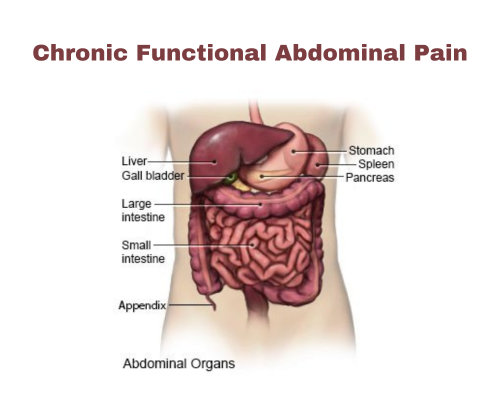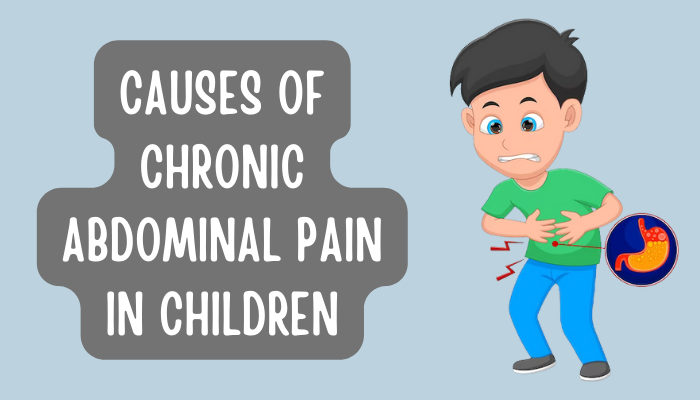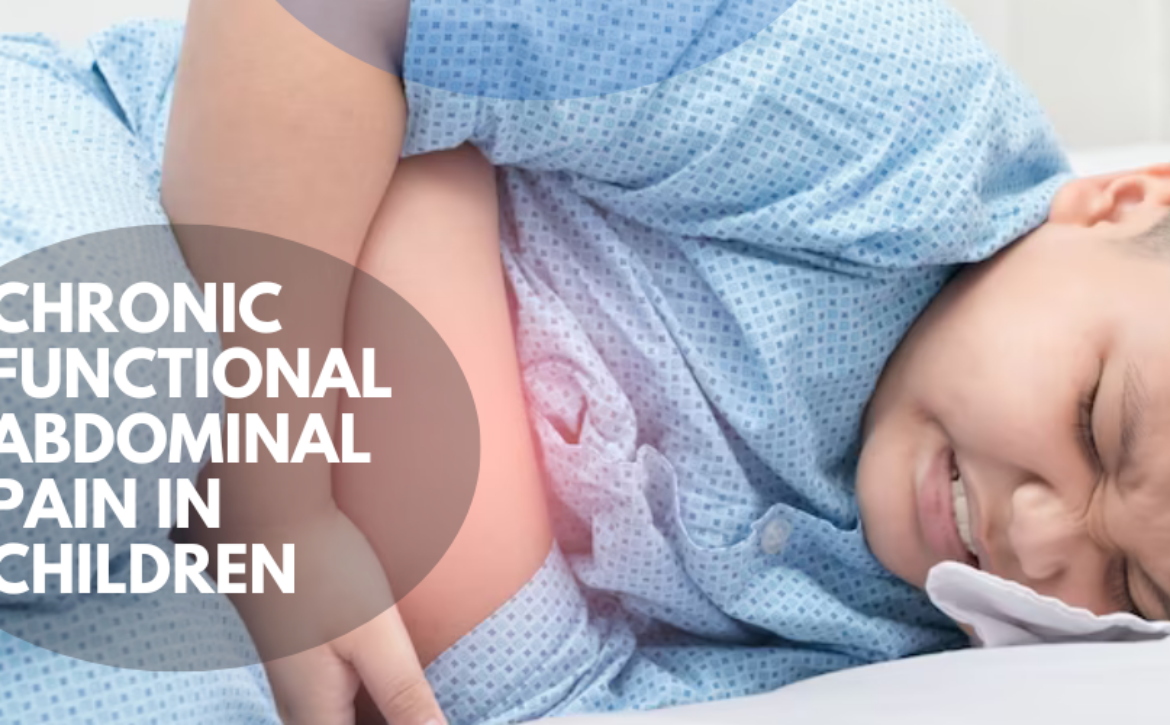Things to Know About Chronic Functional Abdominal Pain in Children
Chronic Functional Abdominal Pain in children is a condition that can be always scary and distressing for the parents. It’s essential to understand what this condition entails, its various types, causes, symptoms, and how to manage it effectively. In this blog, we will explore the world of chronic functional abdominal pain in children, shedding light on what it is and how to treat it.
What is Chronic Functional Abdominal Pain?

Chronic Functional Abdominal Pain (CFAP) is a term used to describe persistent stomach discomfort or pain in children without any known underlying medical cause. This condition can be perplexing because it doesn’t show any structural issues or abnormalities when examined through medical tests like X-rays, endoscopy, or blood work. It is essential to differentiate Chronic Functional Abdominal Pain from other gastrointestinal conditions, such as irritable bowel syndrome or inflammatory bowel disease, which may have clear physiological markers.
Different Types of Chronic Abdominal Pain in Children
I) Recurrent Abdominal Pain (RAP): RAP is a common type of CFAP in children. It involves abdominal pain with nausea, vomiting, or loss of appetite that occur intermittently over an extended period. These episodes may come and go without any specific triggers or patterns.
II) Functional Dyspepsia: Functional dyspepsia is characterized by upper abdominal pain or discomfort, often accompanied by symptoms like early satiety, bloating, and nausea. It can be challenging for children to articulate their discomfort, making it important for parents and healthcare providers to pay close attention.
III) Irritable Bowel Syndrome (IBS): IBS is a well-known condition characterized by abdominal pain, bloating, and changes in bowel habits. Children with CFAP may sometimes exhibit IBS-like symptoms without meeting the full diagnostic criteria for IBS.
Causes of Chronic Abdominal Pain in Children

Understanding the underlying causes of Chronic Functional Abdominal Pain is crucial to its management. While the precise cause of Chronic Functional Abdominal Pain is not always clear, several factors can contribute to its development:
i) Stress and Anxiety: Children, like adults, can experience stress and anxiety, which may manifest as abdominal pain. Emotional factors, such as family issues or school-related stress, can be significant triggers.
ii) Diet and Nutrition: Food choices can play a role in Chronic Functional Abdominal Pain. Some children may have dietary intolerances or sensitivities that lead to stomach discomfort. Fiber intake, hydration, and overall diet quality are important considerations.
iii) Gastrointestinal Motility: Irregular or altered gastrointestinal motility can contribute to CFAP. When the stomach and intestines do not function optimally, it can result in pain and discomfort.
iv) Visceral Hypersensitivity: Some children may have a heightened sensitivity to pain in their abdominal organs. Even minor sensations that would not typically cause discomfort may trigger pain in these cases.
Symptoms of Functional Abdominal Pain
Recognizing the symptoms of Chronic Functional Abdominal Pain is essential to provide timely support and care to affected children. Common symptoms include:
1) Frequent episodes of abdominal pain
2) Pain relief upon bowel movements
3) Bloating
4) Changes in bowel habits, such as diarrhea or constipation
5) Nausea
6) Loss of appetite
7) Fatigue
8) Anxiety and irritability
How to Treat Chronic Functional Abdominal Pain?

Addressing Chronic Functional Abdominal Pain in children often requires a multi-faceted approach involving healthcare professionals, parents, and the child themselves. Here are some strategies to consider:
1. Consult a Healthcare Provider: If your child is experiencing chronic abdominal pain, it’s essential to seek professional guidance. A healthcare provider can assess the symptoms, conduct necessary tests, and rule out other medical conditions.
2. Dietary Modifications: Adjusting your child’s diet can make a significant difference. Identify and eliminate potential trigger foods, ensure a balanced diet, and encourage regular meals and hydration.
3. Stress Management: Support your child in managing stress and anxiety. Techniques such as relaxation exercises, deep breathing, and mindfulness can help alleviate symptoms.
4. Medication: In some cases, medication may be prescribed to relieve pain or manage specific symptoms. This should always be done under the guidance of a healthcare professional.
5. Counseling or Therapy: For children struggling with emotional factors contributing to CFAP, counseling or therapy may be beneficial. It provides a safe space for them to express their feelings and develop coping strategies.
6. Probiotics: Probiotics may help regulate gut health and improve symptoms in some children with CFAP. Always consult with a healthcare provider before introducing probiotics.
7. Monitor and Track Symptoms: Keeping a diary of your child’s symptoms can be useful in identifying triggers and patterns. This information can guide treatment and lifestyle adjustments.
Conclusion
Chronic Functional Abdominal Pain in children can be a challenging condition to deal with, both for parents and the affected children. It’s crucial to remember that CFAP does not result from structural abnormalities or severe medical conditions, but it can significantly impact a child’s quality of life. By understanding the different types, causes, and symptoms of Chronic Functional Abdominal Pain, and by implementing a holistic approach to treatment, we can help children manage and alleviate their abdominal pain, allowing them to enjoy a happier and healthier childhood. If you suspect your child is suffering from chronic abdominal pain, consult a healthcare professional for proper diagnosis and guidance on managing this condition effectively.

